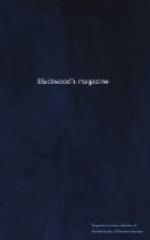bound to the Queen in the required sums, if the accused
does not appear to take his trial, at the appointed
time and place. This recognizance must be subscribed
by the magistrates, and delivered with the examinations
to the officer of the court in which the trial is
to take place. With this, the preliminary proceedings
close: the accused has had one opportunity of
refuting the charge, or of clearing himself from the
suspicion which has gathered round him; but as yet,
there is no written accusation, no written statement
of the offence which it is alleged he has committed.
True, he has heard evidence—he has heard
a charge made orally against him—but the
law requires greater particularity than this before
a man shall be put in peril upon a criminal accusation.
The facts disclosed in the evidence before the magistrates
must be put in a legal form; the offence must be clearly
and accurately defined in writing, by which the accused
may be informed what specific charge he is to answer,
and from which he may be able to learn what liability
he incurs; whether his life is put in peril, or whether
he is in danger of transportation or of imprisonment,
or merely of a pecuniary fine. This is done by
means of the indictment. The indictment is a
written accusation of one or more several persons,
preferred to and presented upon oath by a grand jury.
This written accusation, before being presented to
the grand jury, is properly termed a “bill;”
and, in ordinary cases, it is generally prepared by
the clerk of the arraigns at the assizes, and by the
clerk of the peace at the quarter sessions; but, in
cases of difficulty, it is drawn by counsel.
It consists of a formal technical statement of the
offence, which is engrossed upon parchment, upon the
back of which the names of the witnesses for the prosecution
are indorsed. In England it is delivered to the
crier of the court, by whom the witnesses are sworn
to the truth of the evidence they are about to give
before the grand jury. In the trial now pending
in the Court of Queen’s Bench in Ireland, a
great question was raised as to whether a recent statute,
which, on the ground of convenience, enabled grand
juries in Ireland themselves to swear the witnesses,
extended to trials before the Queen’s Bench.
This question was decided in the affirmative; therefore,
in that country, the oath, in every case, must be
administered by the grand jury themselves; whereas,
in this country, the witnesses are sworn in court,
and by the crier, as we have already mentioned.
The grand jury, ever since the days of King Ethelred,
must consist of twelve at least, and not more than
twenty-three. In the superior courts they are
generally drawn from the magistracy or superior classes
of the community, being, as Mr Justice Blackstone
expresses it, “usually gentlemen of the best
figure in the county.” They are duly sworn
and instructed in the articles of their enquiry by
the judge who presides upon the bench. They then
withdraw, to sit and receive all bills which may be




